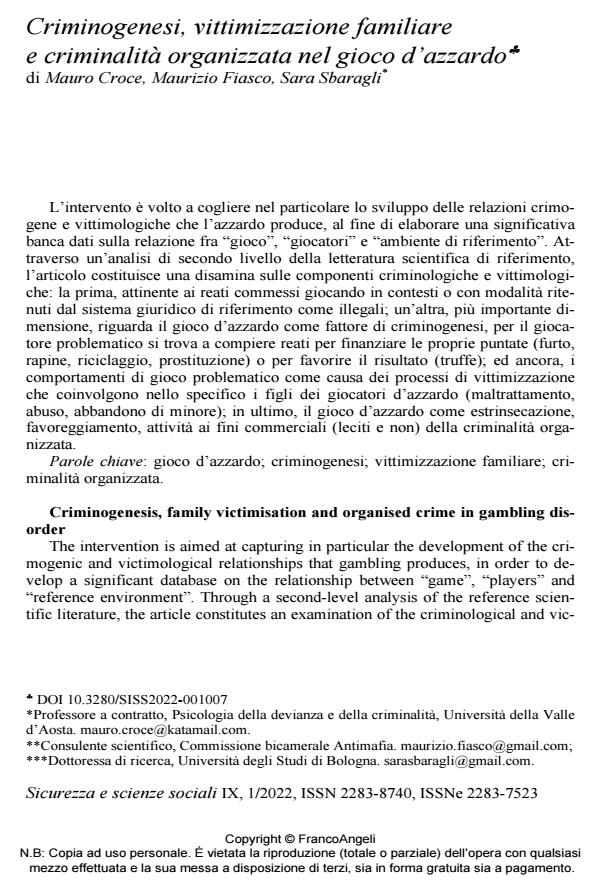Criminogenesis, family victimisation and organised crime in gambling disorder
Journal title SICUREZZA E SCIENZE SOCIALI
Author/s Mauro Croce, Maurizio Fiasco, Sara Sbaragli
Publishing Year 2022 Issue 2022/1
Language Italian Pages 18 P. 73-90 File size 257 KB
DOI 10.3280/SISS2022-001007
DOI is like a bar code for intellectual property: to have more infomation
click here
Below, you can see the article first page
If you want to buy this article in PDF format, you can do it, following the instructions to buy download credits

FrancoAngeli is member of Publishers International Linking Association, Inc (PILA), a not-for-profit association which run the CrossRef service enabling links to and from online scholarly content.
The intervention is aimed at capturing in particular the development of the crimogenic and victimological relationships that gambling produces, in order to develop a significant database on the relationship between "game", "players" and "reference environment". Through a second-level analysis of the reference scien-tific literature, the article constitutes an examination of the criminological and victimological components: the first, relating to crimes committed by playing in con-texts or in ways deemed by the legal system of reference to be illegal; another, more important dimension, concerns gambling as a factor of criminogenesis, for the gamblers is to commit crimes to finance their bets (theft, robbery, money laun-dering, prostitution) or to favor the result (scams); and again, problematic gambling behaviors as a cause of victimization processes involving specifically the children of gamblers (abuse, child abandonment); finally, gambling as extrication, aiding and abetting, activities for commercial purposes (lawful and not) organised crime.
Keywords: gambling disorder; criminogenesis; family victimization; organised crime.
- Il gioco d’azzardo: una prospettiva multidisciplinare Mauro Croce, pp.27 (ISBN:979-12-215-0444-6)
Mauro Croce, Maurizio Fiasco, Sara Sbaragli, Criminogenesi, vittimizzazione familiare e criminalità organizzata nel gioco d’azzardo in "SICUREZZA E SCIENZE SOCIALI" 1/2022, pp 73-90, DOI: 10.3280/SISS2022-001007